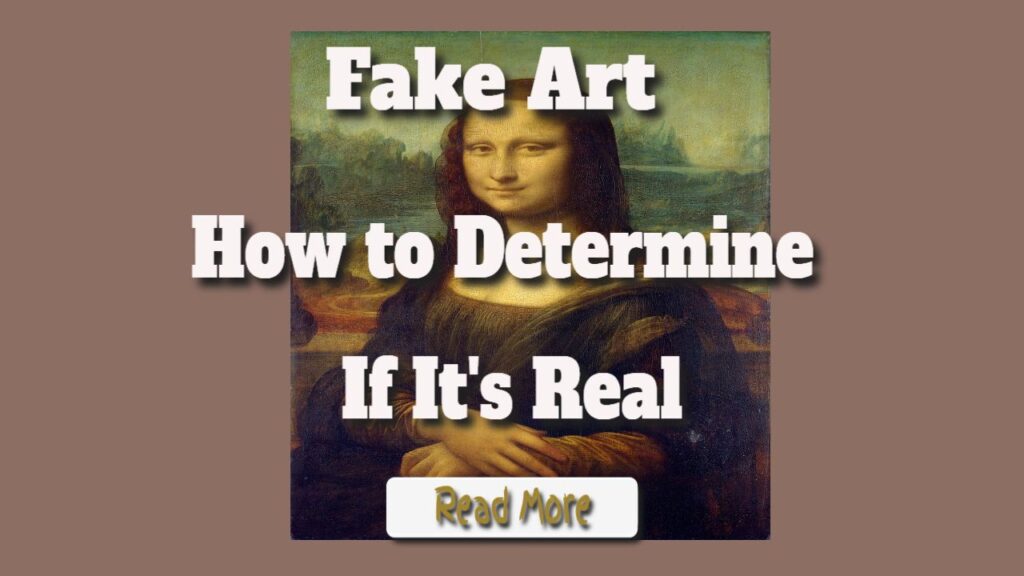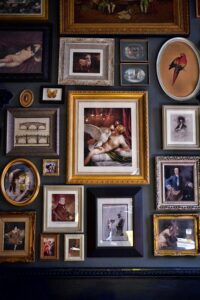Fake Art – How to Determine If It’s Real
Fake Art – How to Determine If It’s Real: Art lovers and enthusiasts understand the value of art. They are the only ones who can detect the emotion evoked by a work of art. However, there are certain scumbags who are satisfied to profit off phoney artwork.
It is conceivable that the painting you want to buy or own is not authentic. The painting that has been appealing to you for a long time may not be the proper match, and you are eager to purchase it for whatever price the merchant asks. What if the artwork is not a genuine original?
The majority of people are quick to discard something because it is cheap simply because it is cheap. Nonetheless, they are less likely to perform an adequate analysis on high-priced things.
Most of us feel that being expensive translates to being one-of-a-kind or valuable. This, however, is incorrect.
According to a CNBC storey, “some fake artworks have been so convincing that they have made their way into Christie’s and Sotheby’s auctions!”
I’m sure you understand how dire the situation is at this moment. Continue reading to find out how to identify if the artwork is genuine.
Read and do some research.
If you are an art collector, the work of a well-known artist is almost always appealing. Do you concur? Look at some of this artist’s earlier work in that situation.
You will be able to recognise his personality. Examine the painting you want to buy now. Is it included in the artist’s greater body of work? Is there anything surprising about it? After then, proceed with utmost caution.
It could simply be an ordinary artwork that has been mislabeled as the work of a well-known artist.
Signature
Make sure the signature is correct. Check the positioning of the signature and the style of the signature. Now try to name the other works by the same artist similar to this one.
Is the signature placed in the same spot every time?
Is the work you’ve done differently from what you had before? I
Are you sure it’s not in a different section of the painting than the other pieces?
If this is the case, you should cancel your plans to buy the painting. It is not worth your time or money to take part! Most painters sign their work in colours that match to the artwork they’re working on.
If they don’t match, it’s plausible to doubt the painting’s authenticity. Similarly, many painters date and, in certain cases, describe where they were made with their works.
Examine the artist’s previous work and look for a trend. A disagreement must be thoroughly investigated in the event of a discrepancy.
Bristles of a Brush
This is the case when it comes to a low-cost knockoff. Take a closer look and you’ll see what I mean. The brush bristles have become firmly bonded to the paint surface, as seen in this shot.
There are various methods for determining the veracity of a photograph. This is one of the most commonly used methods. Brush bristle remnants will not be visible on an original piece of art because they have been eliminated.
The phrase “old is gold” refers to something that has aged beautifully.
This is unmistakably true when it comes to a painting. The ancient character of the frame, canvas, and paint should move you. Everything about it: you can smell the freshness of a freshly painted wall as soon as you go up to it.
An antique photograph has a particular odour as well as a certain allure. The fact that it is withering proves its worth. The framing is selected rather than the subject. This collection does not have any unusual pairings.
Keep an Eye Out for These Minor Hints
Examine the ancient artwork on display at a museum. Please inquire with the gallery staff and request that they show the standards for restoring an ancient painting.
You should be able to gather some useful information that will assist you in determining whether or not the work you have with you is correct.
Examine the Material Stacking
Many levels of an original work of art are apparent to the human eye, and it is not rare to find multiple layers in one piece of art. When employing a fake, it is impossible to detect how deep the hole is. You should be able to tell the difference between them ideally.
Consider the colours. If it’s an antique painting, make sure you know what colours are in it. There were not many options accessible in the past.
Get an Appraisal for the Painting
When a large sum of money is at stake, people tend to be more careful. It would be advantageous if you did not settle for solutions that do not allow you to personally examine the work. Find a professional to perform the appraisal. However, make certain that the appraiser you pick is properly licenced to complete the service.
It is simple to identify a print.
In this case, a magnifying glass should come in handy. A printed work of art has particular characteristics. Holding the painting up to the light source allows you to examine it from the back.
If the artwork is authentic, the back of the canvas should be visible; otherwise, you will be unable to detect if it is a forgery. A printed copy, on the other hand, does not have this limitation. Because the painting is original, we believe you can perceive the light shining through it.
This is due to the fact that artists use varying degrees of impasto (i.e., the thickness of paint in certain areas). In a real painting, you can notice brushstrokes that differ in size and texture from one another.
The only way to achieve perfection is to use a print. Fakes are disappointing, and they can be detrimental to your business. Consider the risk of spending a fortune on a piece of art that turns out to be a forgery.
If the information offered here does not persuade you that the picture is genuine, you should seek expert assistance.
Certificate of Origin Authentication
A signed document serves as the foundation for an authenticity certificate, which confirms a piece of art’s authenticity while also offering information about the piece of art.
All genuine works of art come with a certificate of authenticity. A copy of this agreement, together with the sold original painting, must be delivered to the buyer.
The authenticity of an artwork refers to the fact that the location of the artwork’s origin has been properly identified and recorded. Artwork that lacks a certificate of authenticity is likely a fake and should not be purchased.
The post Fake Art – How to Determine If It’s Real appeared first on https://gqcentral.co.uk







Comments are closed